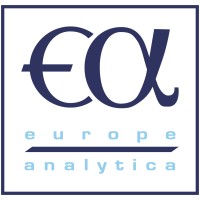Company Details
shared-use-mobility-center
25
4,758
921
sharedusemobilitycenter.org
0
SHA_1693880
In-progress

Shared-Use Mobility Center Company CyberSecurity Posture
sharedusemobilitycenter.orgThe Shared-Use Mobility Center (SUMC) is a public-interest partnership working to foster collaboration in shared mobility (including bikesharing, carsharing, ridesharing and more) and help connect the growing industry with transit agencies, cities and communities across the nation. Through piloting programs, conducting new research and providing advice and expertise to cities and regions, SUMC hopes to extend the benefits of shared mobility for all.
Company Details
shared-use-mobility-center
25
4,758
921
sharedusemobilitycenter.org
0
SHA_1693880
In-progress
Between 700 and 749

 SMC Global Score (TPRM)
SMC Global Score (TPRM)XXXX



No incidents recorded for Shared-Use Mobility Center in 2025.
No incidents recorded for Shared-Use Mobility Center in 2025.
No incidents recorded for Shared-Use Mobility Center in 2025.
SMC cyber incidents detection timeline including parent company and subsidiaries

The Shared-Use Mobility Center (SUMC) is a public-interest partnership working to foster collaboration in shared mobility (including bikesharing, carsharing, ridesharing and more) and help connect the growing industry with transit agencies, cities and communities across the nation. Through piloting programs, conducting new research and providing advice and expertise to cities and regions, SUMC hopes to extend the benefits of shared mobility for all.


The Planning and Conservation League (PCL) is a 501(c)(4) nonprofit lobbying organization devoted to enacting and implementing policies that protect and restore California’s environment at legislative and administrative levels. Since 1965, we’ve transformed the landscape of California, preserving i

Europe Analytica is a Brussels-based, leading independent public affairs consultancy offering expert advocacy and advisory services across a diverse range of fields, including digital transformation, data privacy, advertising, sustainability, and the media and creative industries. Leveraging in-dept

The Office of the Privacy Commissioner (PrivCom) for Bermuda was established as an independent public office in accordance with the Personal Information Protection Act 2016 (PIPA). The mandate of the Privacy Commissioner is to regulate the use of personal information by organisations in a manner whi

LIBRE seeks to become the leading Hispanic voice across the nation that strives for freedom-minded solutions that benefit all. With a limited government, comes unlimited opportunities. LIBRE plays a distinct and critical role in helping to connect this growing and relatively young population to our

The Texas Taxpayers and Research Association (TTARA) is the state’s pre-eminent association focusing on responsible state and local fiscal policy and how those policies impact the Texas economy. TTARA is a non-profit, membership-supported organization of both businesses and individuals. Our members

The National Association of SARA Title III Program Officials (NASTTPO) is made up of members and staff of State Emergency Response Commissions (SERCs), Tribal Emergency Response Commissions (TERCs), Local Emergency Planning Committees (LEPCs), various federal agencies, and private industry. Members
.png)
Microtransit is reshaping public transit with flexible, on-demand options that enhance connectivity and expand access in underserved areas.
There's high interest in remote-driving services that allow individuals to control vehicles from anywhere. We explore the potential of this...
Micromobility—shared scooters, bikes, and other forms of shared individual vehicles—is one way to bridge this gap, reducing traffic and...
A new report on micromobility ridership in 2023 from the National Association of City Transportation Officials examines trends in the use of...
The Joint Office of Energy and Transportation announced the Communities Taking Charge Accelerator funding opportunity announcement (FOA) to drive innovation.
With increasing fuel prices and more focus on protecting the environment micromobility is on the rise. Learn about the future of urban...
In the next 15 years, drivers in big cities may trade cars for car-sharing services and electric shuttles and cut car ownership by 70%.
Fifteen of the world's leading transport and technology companies have signed the Shared Mobility Principles for Livable Cities, pledging to prioritise people...
Originally called the William R. Hewlett Foundation, the William and Flora Hewlett Foundation was founded in 1966 by its namesakes to...

Explore insights on cybersecurity incidents, risk posture, and Rankiteo's assessments.
The official website of Shared-Use Mobility Center is http://sharedusemobilitycenter.org.
According to Rankiteo, Shared-Use Mobility Center’s AI-generated cybersecurity score is 743, reflecting their Moderate security posture.
According to Rankiteo, Shared-Use Mobility Center currently holds 0 security badges, indicating that no recognized compliance certifications are currently verified for the organization.
According to Rankiteo, Shared-Use Mobility Center is not certified under SOC 2 Type 1.
According to Rankiteo, Shared-Use Mobility Center does not hold a SOC 2 Type 2 certification.
According to Rankiteo, Shared-Use Mobility Center is not listed as GDPR compliant.
According to Rankiteo, Shared-Use Mobility Center does not currently maintain PCI DSS compliance.
According to Rankiteo, Shared-Use Mobility Center is not compliant with HIPAA regulations.
According to Rankiteo,Shared-Use Mobility Center is not certified under ISO 27001, indicating the absence of a formally recognized information security management framework.
Shared-Use Mobility Center operates primarily in the Public Policy Offices industry.
Shared-Use Mobility Center employs approximately 25 people worldwide.
Shared-Use Mobility Center presently has no subsidiaries across any sectors.
Shared-Use Mobility Center’s official LinkedIn profile has approximately 4,758 followers.
No, Shared-Use Mobility Center does not have a profile on Crunchbase.
Yes, Shared-Use Mobility Center maintains an official LinkedIn profile, which is actively utilized for branding and talent engagement, which can be accessed here: https://www.linkedin.com/company/shared-use-mobility-center.
As of November 27, 2025, Rankiteo reports that Shared-Use Mobility Center has not experienced any cybersecurity incidents.
Shared-Use Mobility Center has an estimated 1,026 peer or competitor companies worldwide.
Total Incidents: According to Rankiteo, Shared-Use Mobility Center has faced 0 incidents in the past.
Incident Types: The types of cybersecurity incidents that have occurred include .
.png)
Angular is a development platform for building mobile and desktop web applications using TypeScript/JavaScript and other languages. Prior to versions 19.2.16, 20.3.14, and 21.0.1, there is a XSRF token leakage via protocol-relative URLs in angular HTTP clients. The vulnerability is a Credential Leak by App Logic that leads to the unauthorized disclosure of the Cross-Site Request Forgery (XSRF) token to an attacker-controlled domain. Angular's HttpClient has a built-in XSRF protection mechanism that works by checking if a request URL starts with a protocol (http:// or https://) to determine if it is cross-origin. If the URL starts with protocol-relative URL (//), it is incorrectly treated as a same-origin request, and the XSRF token is automatically added to the X-XSRF-TOKEN header. This issue has been patched in versions 19.2.16, 20.3.14, and 21.0.1. A workaround for this issue involves avoiding using protocol-relative URLs (URLs starting with //) in HttpClient requests. All backend communication URLs should be hardcoded as relative paths (starting with a single /) or fully qualified, trusted absolute URLs.
Forge (also called `node-forge`) is a native implementation of Transport Layer Security in JavaScript. An Uncontrolled Recursion vulnerability in node-forge versions 1.3.1 and below enables remote, unauthenticated attackers to craft deep ASN.1 structures that trigger unbounded recursive parsing. This leads to a Denial-of-Service (DoS) via stack exhaustion when parsing untrusted DER inputs. This issue has been patched in version 1.3.2.
Forge (also called `node-forge`) is a native implementation of Transport Layer Security in JavaScript. An Integer Overflow vulnerability in node-forge versions 1.3.1 and below enables remote, unauthenticated attackers to craft ASN.1 structures containing OIDs with oversized arcs. These arcs may be decoded as smaller, trusted OIDs due to 32-bit bitwise truncation, enabling the bypass of downstream OID-based security decisions. This issue has been patched in version 1.3.2.
Suricata is a network IDS, IPS and NSM engine developed by the OISF (Open Information Security Foundation) and the Suricata community. Prior to versions 7.0.13 and 8.0.2, working with large buffers in Lua scripts can lead to a stack overflow. Users of Lua rules and output scripts may be affected when working with large buffers. This includes a rule passing a large buffer to a Lua script. This issue has been patched in versions 7.0.13 and 8.0.2. A workaround for this issue involves disabling Lua rules and output scripts, or making sure limits, such as stream.depth.reassembly and HTTP response body limits (response-body-limit), are set to less than half the stack size.
Suricata is a network IDS, IPS and NSM engine developed by the OISF (Open Information Security Foundation) and the Suricata community. In versions from 8.0.0 to before 8.0.2, a NULL dereference can occur when the entropy keyword is used in conjunction with base64_data. This issue has been patched in version 8.0.2. A workaround involves disabling rules that use entropy in conjunction with base64_data.

Get company history
















Every week, Rankiteo analyzes billions of signals to give organizations a sharper, faster view of emerging risks. With deeper, more actionable intelligence at their fingertips, security teams can outpace threat actors, respond instantly to Zero-Day attacks, and dramatically shrink their risk exposure window.
Identify exposed access points, detect misconfigured SSL certificates, and uncover vulnerabilities across the network infrastructure.
Gain visibility into the software components used within an organization to detect vulnerabilities, manage risk, and ensure supply chain security.
Monitor and manage all IT assets and their configurations to ensure accurate, real-time visibility across the company's technology environment.
Leverage real-time insights on active threats, malware campaigns, and emerging vulnerabilities to proactively defend against evolving cyberattacks.




